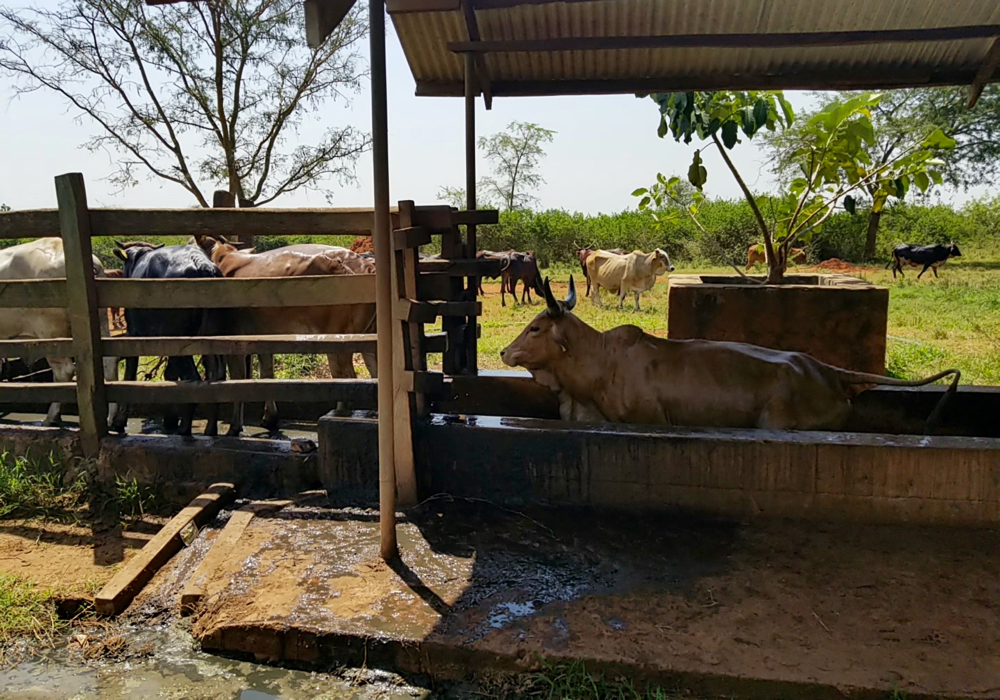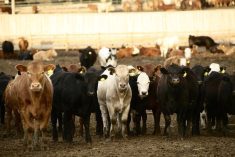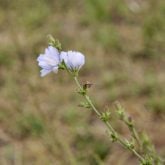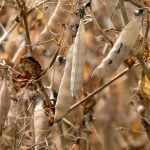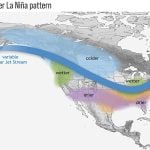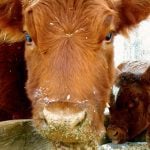It’s a nightmare no livestock producer wants to experience; watching as your entire herd is put down.
The devastation is written across the hardened faces of the farmers featured in a National Film Board of Canada documentary on the 1952 foot-and-mouth disease (FMD) outbreak in southern Saskatchewan. The emotional toll of your cattle becoming infected by this highly contagious disease echoes across the decades loud and clear, as do the scenes of Regina’s empty stockyards and disinfection stations on highways and railroads entering and leaving the quarantine zone.
These images may seem to belong in the past, but as experts warn of the eventuality of FMD returning to Canada, industry organizations are taking steps to prevent the infectious viral disease from coming into the country and to respond appropriately should an outbreak occur.
This is the motivation behind a four-year program funded by the Canadian Agricultural Partnership program. The Animal Health Emergency Management (AHEM) project is “intended to enable Canada’s livestock industry to be a good partner with first response agencies in responding to a serious animal disease event,” says Matt Taylor, project manager for AHEM.

In addition to training veterinarians and identifying gaps in protocol for emergency response, AHEM is helping develop plans and resources for livestock producers and industry associations to prepare and understand their roles during a serious animal disease outbreak. These resources are designed to be transferable to other emergencies that may affect livestock, such as wildfires.
The first component of this work is creating handbooks for producers that are both commodity and province specific. “It walks them through everything they need to know to understand the risk, to prepare for the risk and if it was going on right now to actually respond to the risk,” says Taylor.
The second component is an emergency plan for provincial associations. Each association will have a plan that lays out the key roles their staff needs to play in an emergency operations centre and how to represent producers while partnering with government agencies. The third component is a similar framework of roles and responsibilities for a national association, such as the Canadian Cattlemen’s Association.
Read Also

What to know before you go to Agribition 2025
If you’re attending Agribition 2025, this is the place to find out about tickets, dates and what’s happening this year.
Learning from Uganda’s experience
When the Saskatchewan Cattlemen’s Association (SCA) began working with AHEM to develop the province’s emergency management workbook for beef producers, Marianne Possberg, SCA’s beef production specialist, became involved in this planning. This led to an opportunity for the association to invest in first-hand knowledge of how FMD can affect producers in other countries.
In February, Possberg travelled to Uganda for a five-day training course hosted by the European Commission for the Control of Foot-and-Mouth Disease. Part of the Food and Agriculture Organization of the United Nations, the commission offers in-country training programs for veterinarians and industry representatives to better understand how the disease can spread, how officials respond to it and the symptoms for those who have never seen the disease.
“We wanted to give an understanding of what a highly contagious disease outbreak could look like to a young industry staff person so that that individual could, over the future of their career, have that greater awareness and assist their industry in preparing for it,” says Taylor.
FMD has been a major issue in Uganda for decades, and several factors have made the disease difficult to control. Lack of road infrastructure is one issue in getting veterinarians and officials to farms, and the country’s many skilled veterinarians aren’t as frequently consulted as their Canadian counterparts, Possberg explains.
“They still have a lot of herding from one of the cultural groups, which is a bit more nomadic,” she says. “If those cattle are affected then they can also affect other animals throughout that route.”
Though Ugandan officials have limited cattle movement through specific areas, the virus continues to spread. Having enough reliable vaccines for the different strains of FMD available, especially to producers in the more remote rural areas, has also been a challenge.

During the first part of the program, Possberg and the other attendees met local veterinarians and officials who were at the frontlines. The group then travelled to a farm that had an outbreak in the past to learn about its current biosecurity measures, as well as the measures taken by neighbours.
“We met one producer who had been FMD-free for 25 years and he had put up excellent biosecurity measures, and for that reason he had actually been quite profitable because he was very trusted for his milk supply and for his meat supply,” she says.
While touring different operations and seeing various breeds of African cattle, such as deep red Ankole females with towering horns, the group learned about proper biosecurity techniques for veterinarians visiting an infected farm to ensure the virus doesn’t spread. Here, they were required to wear Tyvek suits to cover all parts of their bodies that could be contaminated. They reviewed best practices for FMD testing. They also learned about gathering the information a veterinarian would need to provide to an epidemiologist to trace the disease to its original source and contain it.
Applying FMD knowledge to Canada
Back in Canada, Possberg would like to make producers aware of the symptoms of FMD.
“We need to ensure that our producers understand the risk to their own farm and they know how to look for the signs,” she says. “There were cases in the U.K. back in the ’90s in which they knew that a vet had seen those diseased animals but they didn’t know the signs and therefore the disease was allowed to spread a bit more.”
The clinical signs of FMD include foot lesions and acute lameness, fever, depression, loss of appetite and sores between the hooves, in the mouth and on the teats, tongue and lips. In cattle, it can be confused with illnesses such as infectious bovine rhinotracheitis and bovine viral diarrhea.
She’d also like to see increased biosecurity measures on Canadian farms and ranches. “It also means having a really good relationship with your vet, doing a yearly inspection or a yearly check with your vet to go over biosecurity.”
Both Possberg and Taylor anticipate that this experience will allow the SCA to better develop the tools needed to respond to an FMD outbreak, taking into consideration the nature of the Canadian beef production system.
“Our industry has evolved to incorporate business practices that really don’t take highly contagious disease into account,” says Taylor.
Commingling in pre-sort sales and community pastures, moving cattle across geographical regions, the high density of feedlot systems and areas with large numbers of cattle create the possibility of the disease spreading rapidly from an infected animal.
“An outbreak would likely be rather large if it were to occur in Canada,” he says. “So we should plan in advance how to do early recognition (and) how to stop movements quickly early on if we need to.”
Investing in a Canadian vaccine bank
A secure, abundant supply of FMD vaccines is vital to these efforts, and the Canadian Cattlemen’s Association (CCA) is currently working to establish a Canadian vaccine bank. While Canada is part of the North American FMD Vaccine Bank, “the volume of vaccines needed to control an outbreak in any of the three countries is probably not sufficient,” says David Moss, CCA’s general manager.
In the event of an outbreak in a highly populated area, such as the Lethbridge corridor, models run by the Canadian Food Inspection Agency (CFIA) show that between 1.9 and 2.7 million doses would be required. With around 65 different variants of FMD, vaccines for several different prevalent strains are needed to ensure they can be distributed as soon as possible.
“We’re looking at establishing a Canadian bank with 30 million doses, consisting of 2.5 million doses of each of the 12 most prominent vaccine concentrates,” says Moss. “Research has shown that if you can get animals vaccinated quickly in an FMD outbreak, you can basically cut the time and cost in half of a full-blown FMD outbreak.” As the vaccines are effective for about five years, they would need to be tested for potency and replaced as necessary.
CCA has been discussing a Canadian vaccine bank with CFIA, though creating one isn’t a simple endeavour by any means, Moss explains. One concern is with the World Organisation for Animal Health’s (OIE) Terrestrial Animal Health Code.
“There’s some issues around the OIE coding of FMD and how to manage an FMD outbreak,” he says.
This currently poses a challenge for zoning off an area without infection to create a free-trade zone. “There’s some wording that needs to be changed at the OIE level to allow that to happen. So Canada’s been working on that aspect. If we can get that in place, that really opens the door for a vaccine bank as an effective tool for an FMD outbreak.”
This relates to the use of DIVA (Differentiating Infected from Vaccinated Animals) vaccines.
“The vaccine leaves markers, which can be detected so that you can differentiate between an animal that has acquired the disease naturally from one that’s been vaccinated,” he says. “That really helps in that zoning discussion, so if you zone an area — let’s say a three or five kilometre area — and then you vaccinate everything inside that area, you can manage those animals and test for them.”
As part of CCA’s policy position, the association has been lobbying the federal government for funding for a vaccine bank. This will be included in CCA’s submission for the next federal budget, and Moss reports that officials are supportive of the proposal. An investment of about US$2 million each year to maintain a Canadian vaccine bank, he states, is “pretty good insurance against a multi-billion-dollar industry of both cattle and hogs.”
The images of quarantined farms in the 1952 NFB film, with a Mountie nailing a quarantine notice to a fence post by the driveway and neighbours dropping off groceries on the side of the road, perhaps don’t seem as foreign as they used to due to COVID-19.
In light of the COVID-19 pandemic, will this human health crisis change the way the livestock industry views disease outbreak planning? Moss notes that while it’s easy to make that connection, whether or not the necessary financial contribution from the federal government is available is the main challenge.
“We’re at such a massive deficit right now trying to support the economy through this human pandemic, the concern is have we used up all available funds that could help with the animal side,” he says. “So my hope is that we see the devastation that can occur and we do the right thing that also needs to be done on the animal side.”
Taylor agrees, viewing the pandemic as something to lend urgency to the planning for an animal disease outbreak.
“I think it’s really important that we look at what’s happened and translate that into our industry,” he says.
A sufficient vaccine supply is just the beginning, Possberg adds, in seeing the industry through an outbreak. After identifying all the animals that might be infected, we have to decide whether to vaccinate to live or kill. If vaccinating to kill, humanely slaughtering the animals will be difficult to co-ordinate, especially with slaughter capacity issues.
“What happens when we vaccinate to live is that the borders will be shut down six months after the last infectious case,” she says.
Similarly, according to the U.S. Department of Agriculture, trading partners “may limit trade as long as FMD-vaccinated animals remain in the country,” so eventually these animals “may need to be removed from the national herd before trade can be fully restored.”
With such complex decisions and responsibilities, the time for the industry to come together and truly prepare is now, says Possberg.
“It’ll take all of us to prevent it, and in the eventuality of this happening, it’ll take all of us to minimize it as well.”


